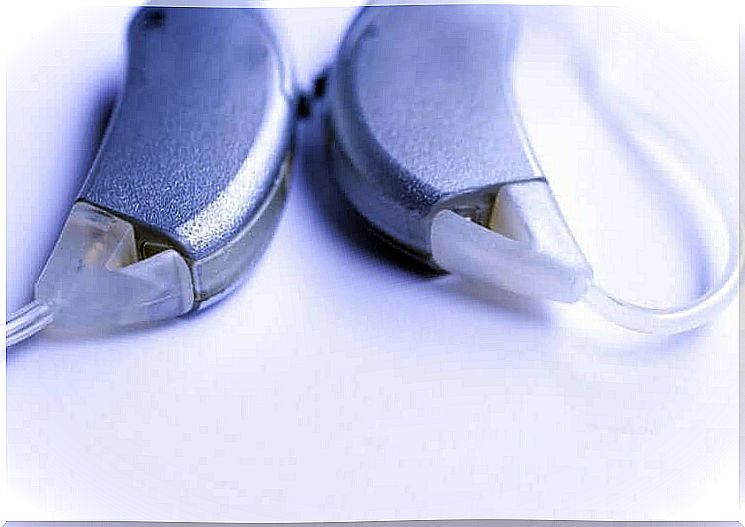Cochlear Implant: Everything You Need To Know

The cochlear implant is a transducer. As such, it is in charge of transforming acoustic signals into electrical signals to stimulate the auditory nerve of people who carry it due to a hearing loss.
This is a relatively new device. The first devices were invented in the 1950s, and were used on hearing impaired patients, with very satisfactory results. Technological evolution has made it possible to improve these systems up to today’s models.
First of all, we need to distinguish between a cochlear implant and a hearing aid. The first, in fact, is surgically inserted into the body through an operation. The hearing aid, on the other hand, is an external device, which works differently.
The improvement in the quality of life of the people who use this device is always remarkable. In any case, the final result varies and depends on many factors. Sometimes, years of adaptation go by before reaping the greatest benefits.
On the plus side, the cochlear implant, once installed, does not cause major restrictions on the patient’s daily life. Most of the activities can be done with total normality.
The parts of the cochlear implant
Like any system, the cochlear implant consists of several parts. The external parts and the internal parts are distinguished , according to their final position.
The external parts are:
- Microphone: picks up sounds
- Processor : selects the sounds picked up by the microphone to discriminate between those that are useful and useless for the language.
- Transmitter: it is the part that is in charge of transporting the sounds from the processor to the internal parts of the device.
The internal parts are:
- Receiver: is the part that is surgically implanted in the mastoid bone of the skull, behind the ear. receives the sounds of the transmitter to send them to the electrodes.
- Electrodes: These are implanted in the inner ear and directly stimulate nerve cells so that the signal reaches the auditory nerve.

How does it work?
When the microphone picks up external sounds, it sends them to the processor. Here they are processed to distinguish sounds that can form language and useless ones. The sound, therefore, is digitized.
Digital sound has distinct characteristics from that heard by people with normal hearing. People using a cochlear implant notice a metallic sound. For this reason, it is difficult at first to distinguish the different voice tones.
The digitized sound passes from the external part of the device to the internal part through a reception-stimulation system. Once in the body, the receptor transforms the digital information into an electrical signal. It is this signal that ultimately stimulates the inner ear.
Each electrode corresponds to a certain frequency of the auditory signal, therefore it generates a specific signal for the auditory nerve. The brain will receive the signal through the auditory nerve and generate the sensation of hearing.

Who can use a cochlear implant?
Potential patients for the installation of a cochlear implant are people who:
- They suffer from severe bilateral hearing loss: hearing loss is severe when the patient does not speak or says only a few words, has little or no voice control, does not utter or pronounce most phonemes correctly.
- They used several hearing aids with poor results and loss of quality of life.
- They recognize less than 50% of sentences in hearing tests.
- They recognize less than 60% of sentences in hearing tests when wearing hearing aids.
The evaluation of the patient will be carried out by an ENT doctor. It is a specialist who deals with the nose, throat and hearing. The otolaryngologist will ask for a series of tests, such as an audiometry, a CT scan, and an MRI of the brain and ear.
Beyond the medical indications, other conditions must also be met for the cochlear implant to be useful. These conditions are not only physical, but also psychological.
It is essential that the person with hearing loss is motivated and aware of the implications of an implant. He will have to go through a subsequent adaptation process which can be difficult and requires a cost commitment. Furthermore, the sound generated by the implant is not the same as what we know as normal hearing.
In the case of children receiving a cochlear implant, it is virtually mandatory to participate in monitoring programs, which help them interpret sounds.
Adults who will undergo surgery will be psychologically evaluated by specialized personnel to determine the ability to face the entire process.








